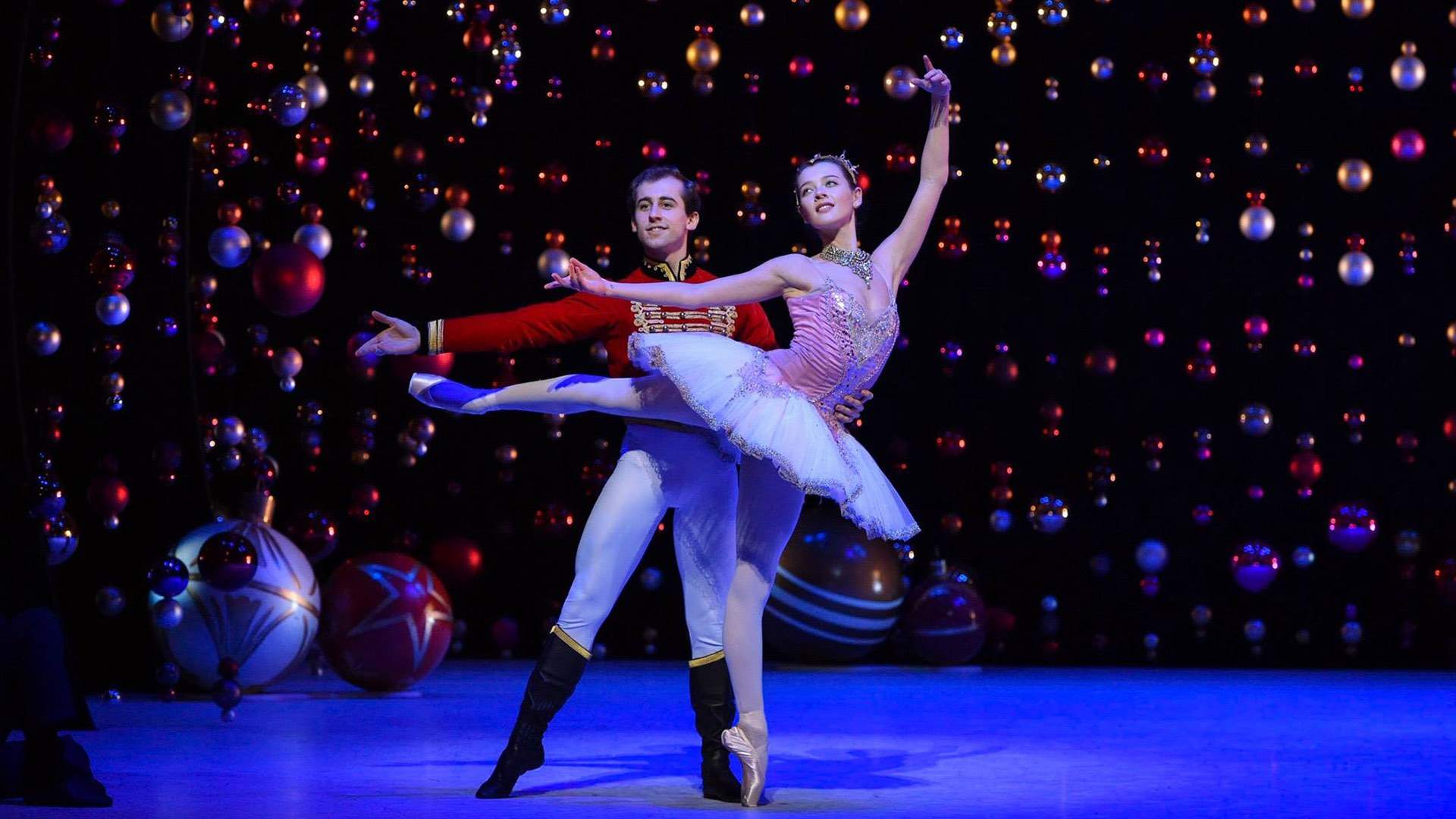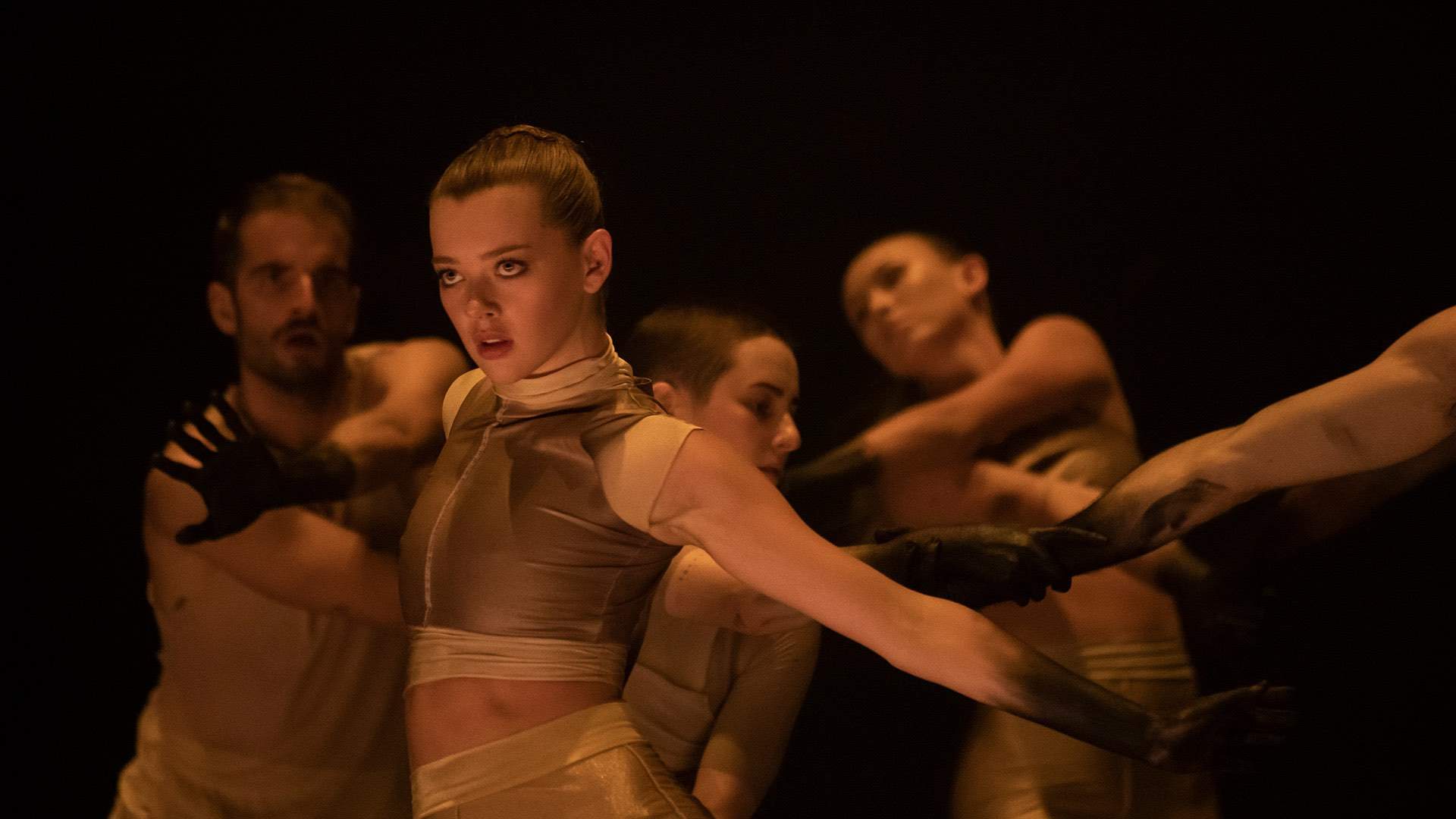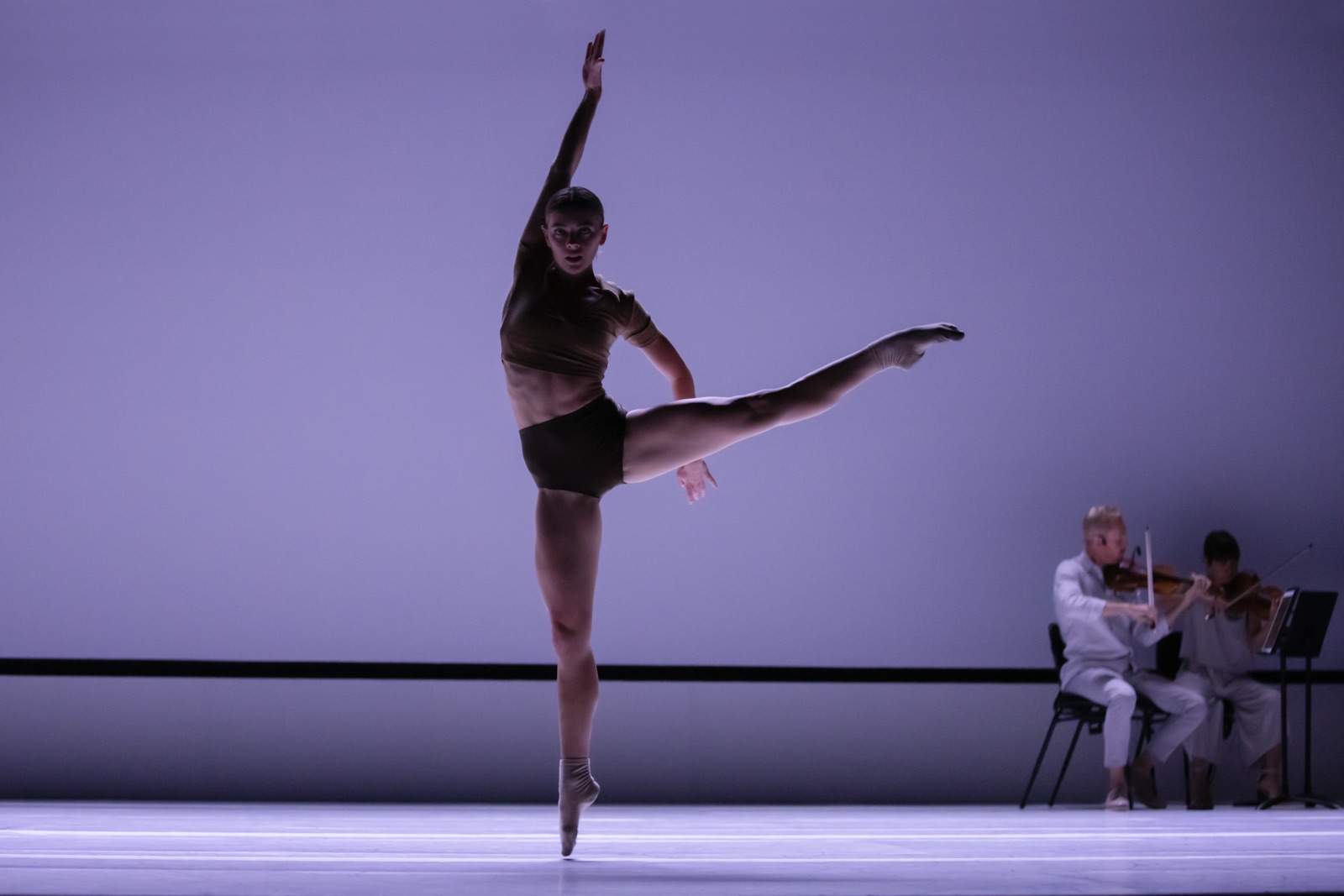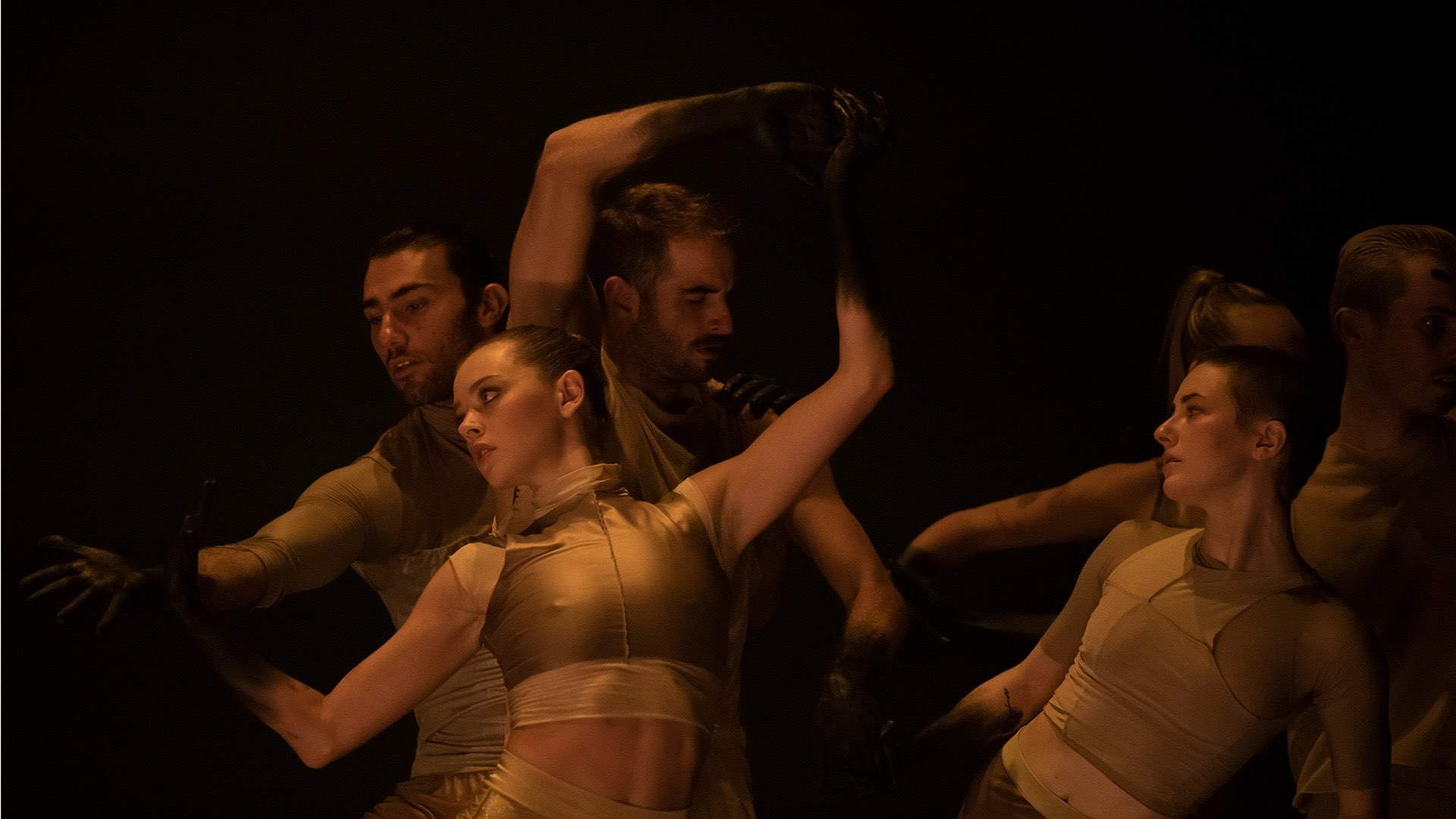Making Moves: Sydney Dance Company's Mia Thompson on What it Takes to Become a Full-Time Dancer
The Brisbane-born artist sheds light on how she got her start, her international moves and the power of being on stage.
In partnership with
Passion. Vulnerability. Determination. This is what Mia Thompson offers when asked what's needed to make a career out of dance. The full-time artist speaks from a position of experience, having had both feet planted in the world of dance since childhood.
"I started dancing when I was 4," Thompson shares. "I wouldn't say I was a superstar — just running around in a cute little tutu thinking everything's great. I have six sisters, so I think it was a way to get us into a controlled space together that was also artistic. It's in our family's blood to be artistic."
Embarking on any creative journey is difficult — embarking on one as your 9–5 that satisfies your inherent creativity and enables you to share your craft with the world is especially so. With the support of LG SIGNATURE — a proud partner of Sydney Dance Company and supporter of the wider arts community — we had a chat with Thompson, exploring her travels to the world's stages, her current position with Sydney Dance Company and what it takes to be a full-time dancer.


Pedro Greig
"I THOUGHT WHAT YOU DID WITH DANCE WAS TEACH"
Not fussy on her favourite style, Thompson fell in love with all forms of dance. Ballet, jazz, modern, hip-hop — for Thompson, it was a joy to just be moving. In high school, after watching an older sister perform, she realised that the world of dance extended further than the classes she was in. "I thought what you did with dance was teach," she laughs. "I saw the Queensland Ballet do The Sleeping Beauty and I was like, 'They're getting paid to do that?! I want to do that!'"
After finishing high school, Thompson joined Queensland Ballet's professional program. "I did one year but the director didn't really like me — he thought I was only doing it 'cos my sister was. I was told it'd be unlikely that I'd get a contract with them, and that I could stay and get my training or find another program with a segue into another company."
A heavy blow, but a blessing in the end. Because, what's vital to flourishing in the world of professional movement art? "A school or teacher that supports you as an individual. You can go to the top school in Europe, but it might not be the top school for you. If they don't understand you, they're not going to give you the most that you can get out of yourself as an artist. I was so headstrong on getting a ballet career, so being in a contemporary [dance] company now, maybe Queensland Ballet could see something I couldn't."
Following her training in Queensland, Thompson went westwards with a successful audition for WAAPA. Living away from home for the first time, evolving as a dancer and starting friendships, the tingle for travel set in. Thompson secured a spot in the Scottish Ballet where, in 2018, she was promoted to first dancer.


Rimbaud Patron
LANDING ON HOME SOIL
While at the Scottish Ballet, she met her future fiancé. "He wanted to do contemporary and I told him about Sydney Dance Company. We were just friends at this point, and I was like 'You should go'." He auditioned, got in and the pair got together, giving long-distance love a go for a year. In the audience of a Sydney Dance Company production — and seeing the new-found articulation in her partner's body — Thompson had a revelation: "With ballet, you're striving for perfection. Watching the [Sydney Dance Company] dancers — the way they moved and the understanding they had for their body — there was nothing that I could relate to. I wanted that, I wanted to be able to speak on behalf of myself and my body."
Dance is a notoriously cutthroat industry. There's limited spots, stiff competition and a relatively short career span.
"You have no idea how many dancers, even in Europe, are just desperate to get into Sydney Dance Company. We are the leading contemporary dance company in Australia, even in the world. Young artists leaving school are just so keen to get in, they want to know everything about you, it's like we're celebrities. It's very easy to forget — I remember myself at that age, dancers would walk past and my jaw would drop. Even before I auditioned, that was me looking at the company."
The chance to audition arose and she took it. She got the longed-for call and high-tailed it Down Under, finishing her time with the Scottish Ballet as Cinderella.
As Thompson speaks, she radiates an almost palpable enthusiasm for her vocation.
Sydney Dance Company's stellar reputation is one that has not only been earned, but continues to be a work in progress. "If we're not performing, a typical day starts at 9.30am and ends at 6pm. You rehearse repertoire or create new work, explore ways of moving. You can have your steps, but every day I see dancers in the mirror or talking to each other trying to find new ways to develop it. It literally never stops growing, which is beautiful in itself."


Pedro Greig
"IT'S FLOW STATE"
When seated behind a desk, it's difficult to imagine a work life dedicated to exploring and executing movement. Beyond perfecting shape after shape, there's a bottomless list of to-dos.
"After a show," Thompson shares, "you'll see most of the dancers in a cubicle, with our feet shoved in an ice bucket to cool." Plus, there's warm-up classes, prehab/rehab (to safeguard those hardworking bodies), rehearsals, feedback sessions and self-review videos, collaboration, hair and makeup, stage direction and spacial notes. The end result? Expertly controlled dancers commanding the stage, allowing audiences to connect and feel something.
When asked what it feels like to perform on stage, Thompson's eyes widen and she lifts her chin. "When I dance I feel a great sense of freedom and release," she smiles. "It's like I'm in a trance. There's no better feeling than feeling completely lost on stage, surrounded by your colleagues. Working with them but also feeling completely alone in this world. It's my happiness, it's my sadness, it's my expressive therapy. It's flow state."
Defining what it takes to be a full-time dancer is so subjective that it's no simple task. But, when you reflect on Thompson's persistence and determination, her desire to understand her body and to collaborate on stage, and the palpable energy and emotion that buzzes around her when she speaks about dancing, it's clear that it's not just a job. "Some days can feel like work," Mia finishes. "But the minute you step out on stage, you just get lost in it."

A supporter of the wider arts community, LG SIGNATURE is a proud partner of Sydney Dance Company. Head to the website to learn more about the partnership.
Top image: Pedro Greig









